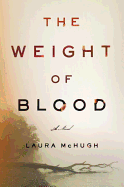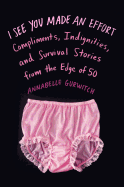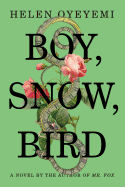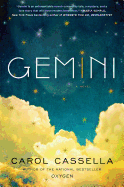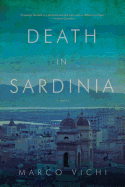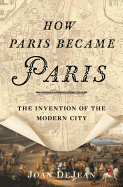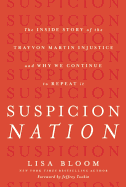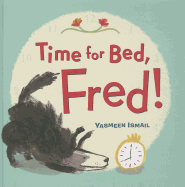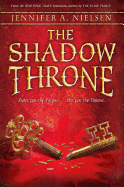Friday, March 14, 2014
Two recent covers caught my attention; the first pages backed up the covers' promise.
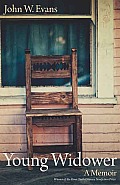 I picked up Young Widower: A Memoir (University of Nebraska Press, $19.95) because of the hushed, poignant cover photograph. John W. Evans lost his wife, Katie, in a "violent and sensational" way: she was mauled by a bear in the Carpathian Mountains. He writes about navigating grief, and begins, "The year after my wife died, I compulsively watched television. I needed distraction, to be entertained. [I was] about a mile from a strip mall where I could rent, in a pinch, midseason discs of The Wire, The Office, Friday Night Lights. I got to know the clerks by name, then by shifts, finally their tastes. Once, I tried to make a formal complaint against the corporate headquarters regarding the suspicious and perpetual absence of the fourth-season finale of Battlestar Galactica. It seemed unjust that the universe would conspire to deny my knowledge of its fictional origins. I worked up a good head of steam before leaving, distraught. I went back a few days later, during a different shift."
I picked up Young Widower: A Memoir (University of Nebraska Press, $19.95) because of the hushed, poignant cover photograph. John W. Evans lost his wife, Katie, in a "violent and sensational" way: she was mauled by a bear in the Carpathian Mountains. He writes about navigating grief, and begins, "The year after my wife died, I compulsively watched television. I needed distraction, to be entertained. [I was] about a mile from a strip mall where I could rent, in a pinch, midseason discs of The Wire, The Office, Friday Night Lights. I got to know the clerks by name, then by shifts, finally their tastes. Once, I tried to make a formal complaint against the corporate headquarters regarding the suspicious and perpetual absence of the fourth-season finale of Battlestar Galactica. It seemed unjust that the universe would conspire to deny my knowledge of its fictional origins. I worked up a good head of steam before leaving, distraught. I went back a few days later, during a different shift."
 Little Demon in the City of Light: A True Story of Murder and Mesmerism in Belle Epoque Paris by Steven Levingston (Doubleday, $26.95). The prologue sets the stage explaining the fear of and fascination with hypnosis in the late 19th century; then: "In Paris in 1889, even murder was a form of theater. And what Michael Eyraud had cooked up was, to him, a brilliant bit of staging: a sexual farce with plenty of suspense and melodrama and then a tragic denouement. Eyraud's absurd plot highlighted his cockeyed view of himself. In his invented world he fancied himself a romantic, a flaneur at his ease strolling along the boulevards, a raconteur idling at Maxim's, a ladies' man, a conjurer who glided like the devil between the light and the dark. And pushed to the edge, he could kill with style."
Little Demon in the City of Light: A True Story of Murder and Mesmerism in Belle Epoque Paris by Steven Levingston (Doubleday, $26.95). The prologue sets the stage explaining the fear of and fascination with hypnosis in the late 19th century; then: "In Paris in 1889, even murder was a form of theater. And what Michael Eyraud had cooked up was, to him, a brilliant bit of staging: a sexual farce with plenty of suspense and melodrama and then a tragic denouement. Eyraud's absurd plot highlighted his cockeyed view of himself. In his invented world he fancied himself a romantic, a flaneur at his ease strolling along the boulevards, a raconteur idling at Maxim's, a ladies' man, a conjurer who glided like the devil between the light and the dark. And pushed to the edge, he could kill with style."
Both books have proven to be riveting, elegant reads. --Marilyn Dahl, editor, Shelf Awareness for Readers
The Weight of Blood
by Laura McHugh
"That Cheri Stoddard was found at all was the thing that set people on edge, even more so than the condition of her body." So opens Laura McHugh's delightfully and darkly disturbing debut novel, The Weight of Blood. The town of Henbane is agitated because it is so good at keeping its secrets--and bodies are so easy to hide in the twisted, wooded Ozark Mountains.
Eighteen-year-old Lucy Dane is troubled not only by the disappearance of her sort-of friend Cheri, but also the unexplained departure of her mother, Lila, who walked out of the house carrying a handgun and nothing else when Lucy was a year old. The perspective switches between two primary narrators: Lucy keeps the reader up to date on current goings-on, and it is through Lila that we begin to learn the ugly secrets that Henbane keeps. The town is almost a character itself, insular, suspicious and largely unmarked by passing time. As Lucy probes the question of Cheri's fate and finds it apparently linked to her mother's, she becomes disturbed at how close her inquiries lead her to home.
The atmosphere is wonderfully spooky, exemplifying Southern noir. As its title suggests, The Weight of Blood is concerned with the strength of our bonds to our family, and the tension between biological ties of blood and the families we choose for ourselves. In a remarkably convincing portrayal of young adulthood, Lucy allows McHugh to explore themes of loyalty: where it's owed, and to what extremes. --Julia Jenkins, librarian and blogger at pagesofjulia
Discover: Laura McHugh's suspenseful debut thriller combines taut pacing, sympathetic characters and wonderfully spooky atmosphere.
Boy, Snow, Bird
by Helen Oyeyemi
Helen Oyeyemi's readers have come to expect the unusual from her--rendered in virtuoso prose. Boy, Snow, Bird delivers once again, though it is in many ways more down-to-earth than her previous offerings. While it has surreal fairy-tale echoes, as well as some nearly implausible plot twists, Boy, Snow, Bird feels like a venture into more mainstream accessibility. In Mr. Fox, Oyeyemi reconfigured the tale of Bluebeard; here she takes on Snow White, cleverly weaving together the "white" obsession inherent in the well-known story to explore questions of identity, specifically with regard to race and gender.
Set in 1950s America, much of Boy, Snow, Bird is narrated from the perspective of Boy Novak, a pale blonde girl from New York City. Boy flees the city to escape her abusive father, and the random bus she boards takes her to Flax Hill, Mass. Soon she meets the symbolically named Arturo Whitman, and his stepdaughter, Snow.
When Boy and Arturo have a child, his secret (and the irony of his last name) is revealed. Questions of identity whirl about in the events that unfold--in the character of Bird, their free-spirited, dark-skinned daughter; in Snow and her enigmatic appearance of perfection; and in Boy herself, whose behavior toward Snow shows all the markers of the wicked queen from the fairy tale. But like all the characters in Boy, Snow, Bird, Boy's identity is mercurial, ever-changing; she retains a choice until the end as to what she will ultimately become. --Ilana Teitelbaum, book reviewer and author
Discover: An ingenious exploration of race and gender identity--inspired by Snow White--from Granta Prize winner Helen Oyeyemi.
Gemini
by Carol Cassella
When "Jane Doe" was airlifted to her Seattle ICU from the Olympic Peninsula, Dr. Charlotte Reese had no idea how intertwined their lives would become. Gemini, Carol Cassella's third novel, following Oxygen and Healer, presents a medical mystery, an ethical conundrum and a love story, with one question at its heart: Who is Jane Doe?
An answer would make Charlotte's job easier: identification of the unconscious patient would mean a relative could make decisions and guide Jane's fate. But nobody is looking for Jane, until Charlotte's long-time partner, Eric, who lived on the Peninsula as a teenager, realizes that Jane is his old friend Renee.
The novel alternates between chapters titled "Charlotte" and "Renee," and the reader learns how "twinned" the two women become. While Charlotte's chapters are set in the story's immediate present, Renee's encompass her life from childhood--including her friendship with Eric--up to the accident that brought her to Charlotte's care. With Eric's support, Charlotte's compassion for her struggling patient extends beyond the bounds of medicine, leading them to Renee's adolescent son and truths that affect them all deeply.
Cassella includes medical and genetic specifics that in a less-carefully crafted work might overwhelm a reader, but are balanced here by compelling characters and plotlines. The breathtaking, hardscrabble beauty of the rural Pacific coast, the tenacity of Charlotte and Renee, Eric and Charlotte's loyalty and love all mesh in an engrossing story with a miraculous conclusion. --Cheryl Krocker McKeon, bookseller, Book Passage, San Francisco
Discover: A medical mystery that explores life, love and fate, as a compassionate doctor realizes how her life intertwines with her patient's.
Shotgun Lovesongs
by Nickolas Butler
In an elegant but down-to-earth debut, Nickolas Butler envisions small-town America through the eyes of four men--one of them a world-famous indie rock star--and one of their wives, all natives of Little Wing, Wis. "These men, these men who have known one another their entire lives. These men who were all born in the same hospital, delivered by the same obstetrician," says Beth, the aforementioned wife, who sometimes envies their male camaraderie. Every lifelong relationship has its ups and downs, though, and over the course of four weddings and several years, their bonds pass through trials of distance and betrayal.
Lee, better known to the general public as indie rock singer Corvus, tours the world but always comes home to Little Wing. "When I had nowhere else to go, I came back here. When I had nothing, I came back here. I came back here and made something out of nothing." When he returns, his friends always receive him with open arms. Charismatic and innocently arrogant, Lee envies his best friend Henry's family life and ties to the land, never imagining the simple life might come with its own obstacles.
While Lee feels jealous of Henry's life, steady and honest Henry sometimes wishes he weren't too proud to ask Lee for a loan. He and his wife Beth have never seriously considered living anywhere but Little Wing, but their small dairy farm runs on a budget so tight that Beth has looked into food stamps. Money troubles aside, Henry and Beth know that their greatest blessing is their fierce love for each other and their growing family. Beth sometimes fantasizes about the life she might have had if her long-ago fling with Lee had grown into more, but even then, her focus spirals back to knowing she and Henry were meant to be: "Would Lee and I come over to Henry's house and have dinner with him and his wife, their children buzzing all around us, and would I look at Henry and detect some infinite sadness, an emptiness that was my absence in his life?" But when Henry belatedly learns the truth about Beth and Lee's brief connection, over 30 years of shared history may not be enough to repair the damage to their marriage, or to Lee and Henry's friendship.
Although his other friendships may falter, Ronny's loyalty to Lee is unshakeable. A former rodeo star, Ronny's career ended prematurely due to a head injury caused not by a bull, but by a simple drunken stumble. Now a recovering alcoholic who lives in a rundown trailer, Ronny tries again and again to pack up and leave Little Wing, but well-intentioned neighbors always notice and bring him home. For Ronny, Little Wing is a reminder of his fallen star and good times now gone.
Finally, there's Kip, always farthest out in the orbit, never feeling he belongs. After a successful stint in Chicago, Kip returns to Little Wing with a wife and a mission to finally prove he belongs in his hometown by renovating the old feedmill that figures so prominently in his high school memories: "Because on top of those old wood and cement grain silos, we found narrow places to lie on our backs and stare at the stars, to drink beer, to talk big, to dream. Our town, Little Wing, down there, not much to see and always shrinking, not even a stoplight blinking against the night, and everyone, all of us, putting it down, talking about leaving, going somewhere, going anywhere but here." Kip has visions of a thriving restaurant, of using the mill to put Little Wing on the map, but his dreams carry a hefty price tag. Of the four friends, Kip is most emblematic of a young professional generation trying to find its place, of wanting to belong in the place you call home but discovering home no longer fits.
Butler's story of five 30-somethings seeking to make sense of how their future relates to their beginnings may focus on small town living, but it will resonate with anyone who ever struggled to reconcile dreams with financial security, true love with real life, and unwelcome changes with changes that never seem to come. Each character must make his or her peace with the road not taken. Butler doesn't fall into the trap of romanticizing small town life, instead showing the difficulties that make rural living often more trying than rewarding. Like any small town, though, Little Wing's strength is in the character of its residents. As Lee observes: "America, I think, is about poor people playing music and poor people sharing food and poor people dancing, even when everything else in their lives is so desperate.... And people can say that I'm wrong, that we're a puritanical people, an evangelical people, a selfish people, but I don't believe that." After spending time with the people of Little Wing, readers will agree. --Jaclyn Fulwood
Mystery & Thriller
Death in Sardinia
by Marco Vichi, transl. by Stephen Sartarelli
Inspector Bordelli, the protagonist of Marco Vichi's Death in Sardinia, is conflicted. It's December 1965, and he's realizing that the war, which still vividly haunts him, is a distant memory to the youth of today. He's also acknowledging that, at 55, he's growing old, and thus tries to quit smoking.
His anti-smoking plans are interrupted by the stress of a new case: a man found dead, a pair of scissors stuck into the back of his neck. He was a notorious loan shark, and countless residents of Florence had reason to want him dead. Bordelli is supposed to be finding Badalamenti's killer, but he finds himself sympathizing with the person who eliminated such a nasty man.
Meanwhile, Bordelli's usual partner, Piras, is recuperating in Sardinia, after being shot in the line of duty. Piras's holiday convalescence takes an interesting twist. however, when he begins to suspect that an apparent suicide in the village wasn't a suicide at all.
Death in Sardinia, the third of Vichi's Inspector Bordelli novels to be published in the United States, mixes modern Italian history, two interesting murders and ponderings on the massive cultural shift that took place in the 1960s, filtering the tumultuous decade through Bordelli and his somewhat antiquated views on loyalty, patriotism and family. Fans of Andrea Camilleri, Donna Leon or Conor Fitzgerald are sure to enjoy Death in Sardinia. --Jessica Howard, blogger at Quirky Bookworm
Discover: A loan shark is found stabbed in Florence and a man is shot in Sardinia in the third installment of Marco Vichi's mystery series set in 1960s Italy.
Food & Wine
The Sugar Season: A Year in the Life of Maple Syrup--and One Family's Quest for the Sweetest Harvest
by Douglas Whynott
The maple syrup industry--tapping trees, gathering sap, making and selling syrup--is more complicated than it might appear. Douglas Whynott's The Sugar Season goes deep into the forests of Vermont, Maine and Quebec, visiting sugarhouses (where syrup is made) and interviewing sugarmakers to give readers a peek into the process of creating and selling syrup.
Many sugarhouses in North America are family affairs, the sugaring equipment and the sap-producing maples handed down through generations. The U.S. maple syrup crop, even with the advent of new tapping and boiling technologies, is largely produced by small- or medium-scale operations. Whynott delves into the industry's particulars, shining light on its history, science and politics.
Whynott's love for his subject is clear; his writing grows lyrical when he rhapsodizes about winter walks in the woods or the taste of pure maple syrup fresh off the boil. He also has a deep respect for the syrup producers he meets, such as entrepreneur Bruce Bascom and his family, who control much of the U.S. syrup crop through production and distribution. Whynott walks with the Bascoms through the historically warm winter of 2011, observing every step of the sugaring process and discussing the potential impact of climate change on the industry.
Although Whynott's research threatens to overwhelm his narrative at times, The Sugar Season is a fascinating glimpse into an ancient process that feeds a thoroughly modern industry. It's sure to stimulate cravings for pure maple syrup, with or without pancakes. --Katie Noah Gibson, blogger at Cakes, Tea and Dreams
Discover: A glimpse into the maple syrup industry and how it may be affected by climate change.
Pies and Tarts: The Definitive Guide to Classic and Contemporary Favorites from the World's Premier Culinary College
by The Culinary Institute of America and Kristina Petersen Migoya
If the mouthwatering strawberry pie on the cover isn't enticement enough, the contents of Pies and Tarts, pulled from the archives of the Culinary Institute of America, will make you want to don an apron and start baking.
Kristina Petersen Migoya, a baking and pastry instructor at the Institute, begins with a primer on tools, equipment (from bakeware to digital scales) and ingredients (including a chart on the seasonal availability of fruits and vegetables). She follows with more than a dozen recipes for crusts, with step-by-step instructions for the aspiring piemaker. By the time readers flip to the recipes for sweet and savory pies, quiches, and tarts, they'll be ready to turn on the oven.
All the classics--apple, cherry, pumpkin--are here, along with a wide range of innovative recipes such as lemon-glazed blueberry hand pies and a raspberry mascarpone tart. The savory section ranges from light, filling quiches to heartier pot pies (vegetarian options included). Finally, there's a handful of recipes for crumble toppings, icings, meringues and creative garnishes.
Packed with helpful tips and delectable photos, Pies and Tarts achieves the perfect combination for a cookbook: informative and delicious. --Katie Noah Gibson, blogger at Cakes, Tea and Dreams
Discover: An informative, delicious cookbook of pies and tarts, packed with helpful techniques and mouthwatering photos.
Biography & Memoir
I See You Made an Effort: Compliments, Indignities, and Survival Stories from the Edge of 50
by Annabelle Gurwitch
Growing older may not be a picnic, but Annabelle Gurwitch (You Say Tomato, I Say Shut Up) packs her literary basket with riotous turns in I See You Made an Effort, her very funny, keen observations on middle age.
Gurwitch starts on the cusp of 50, receiving an unwelcome solicitation from the AARP, and ends with an essay, rendered in dramatic form, offering a clever take on thoughts that infuse a myriad of menopausal minds as they toss and turn, obsessing over life at 4 a.m. In between, she offers 14 wickedly funny riffs on her jaunts to the Apple Store (lustfully fantasizing about the "Genius" techie--a boy her son's age--servicing her computer), her quest for anti-aging concealer, attending a rock concert with her teenage son, the challenges of meditation, growing older in Hollywood, being a member of the "Sandwich Generation" and the perils of Google, among other topics. Unexpected poignancy underscores a piece about a dying friend and her quest for assisted suicide.
Gurwitch, a professed atheist, prefaces many essays with amusing petitions to God: If there is a heaven, she requests, she'd like to spend her afterlife wearing a plush bathrobe; if reincarnation exists, she'd like to be a few inches taller.
Humor and sarcasm may serve as the driving force behind each of these essays, but profound insight into the absurdities of modern middle age ultimately infuses Gurwitch's smart, searing wit. --Kathleen Gerard, blogger at Reading Between the Lines
Discover: Comical, insightful essays about the feminine experience of modern middle age.
The Ogallala Road: A Memoir of Love and Reckoning
by Julene Bair
Julene Bair left the family farm in the high plains of Kansas for the bigger world of San Francisco, then the solitude of a rock house in the Mojave Desert. She returned to Kansas pregnant, worked with her father on the farm for as long as she could stand it, then found security in a cowboy town in Wyoming, where she raised her son alone. She returned again to tour the ever-diminishing creeks and springs on foot and to study the Ogallala Aquifer, which the United States relies upon for 30% of its irrigated crops. Next to a big cottonwood, she meets a cowboy who admires Cormac McCarthy--and falls in love.
For most of The Ogallala Road, this cowboy, Wade, accompanies Bair as she struggles to reconcile the wilderness-loving, liberal-minded, Subaru-driving writer she's become with her roots as a farmer's daughter of Kansas's conservative rural plains. The farm that has sustained generations of her forebears retains a strong hold on Bair's heart, and her family's--and her own--role in depleting the aquifer becomes a central source of conflict. The Ogallala Road meanders through the history of the Cheyenne Indians' longtime residence in the region, seeking insight into a more balanced relationship with earth and water.
In its combination of nature writing, environmental concern and love story, The Ogallala Road is unusual. Bair's contemplative praise of the high plains and the western deserts, her yearning for a father for her son and her lament for a dying way of life will strike chords for many readers. --Julia Jenkins, librarian and blogger at pagesofjulia
Discover: An environmentalist revisits the family farm with mixed feelings, and finds a love story along the way.
History
How Paris Became Paris: The Invention of the Modern City
by Joan Dejean
The 19th-century civic planner Baron Haussman is often given credit for transforming Paris into a modern city through a massive rebuilding project of bridges, wide boulevards and public spaces. But Joan DeJean argues, in How Paris Became Paris, that the real transformation occurred two centuries earlier, when Henri IV set out to rebuild a city ravaged by 36 years of conflict between Catholics and Protestants during the Wars of Religion. In 1597, wolves roamed freely in the French capital; by 1700, Paris was synonymous with culture, glamour and fashion.
Beginning with the building of the Pont Neuf (literally "the New Bridge"), DeJean (The Age of Comfort) tells the story of a century of royal vision, private funding, innovative real estate development and public planning. She also looks at how physical changes to the city created new behaviors, new institutions and new problems. Many of the things we think of as typically urban first appeared at this time, from public transportation and sidewalks to traffic jams and tourists (not the same thing as pilgrims). Other changes are less familiar: creating public spaces in which to promenade led to the new crime of cloak-snatching.
DeJean is also concerned with more than just 17th-century urban renewal. Using a range of sources including contemporary guidebooks, plays and travel accounts, she explores how the city's image was reinvented--creating a fantasy of Paris as what Claude Monet would later describe as "that dizzying place." --Pamela Toler, blogging at History in the Margins
Discover: How Paris was transformed from an urban ruin to an urban fantasy--centuries before we usually think of it having occurred.
Current Events & Issues
Suspicion Nation: The Inside Story of the Trayvon Martin Injustice and Why We Continue to Repeat It
by Lisa Bloom
In Suspicion Nation, legal analyst Lisa Bloom evaluates the George Zimmerman murder trial, detailing how Florida prosecutors failed to win justice for Trayvon Martin. Bloom takes readers step by step through the areas she identifies as key problems--the prosecutors' refusal to address the issue of race, a lack of trust in the witnesses, the exclusion of vital evidence, even the tendency to pose questions to the jury instead of making firm statements--then shares alternate strategies the prosecution could have pursued.
Bloom also maintains that what happened to Martin is not uncommon. While this case made international headlines, many more frighteningly similar tragedies barely make local news reports. Through a combination of anecdotal and statistical evidence, Bloom illustrates that "our laws, beliefs, assumptions, and blind spots combine to create the conditions that led to the death of Trayvon, and which made Zimmerman's acquittal by far the most likely outcome."
Suspicion Nation is an alarming, somewhat uncomfortable and brutally realistic look at race, stereotypes and violence in the United States. Race continues to be a significant issue in education, in employment, in the justice system--evidence shows continued inequality that has a negative effect on a significant segment of the population. Reading Bloom's analysis and thinking the U.S. no longer has a racism problem would be a major feat indeed. --Jen Forbus of Jen's Book Thoughts
Discover: A legal analyst takes on one of the most talked-about murder cases in recent history, scrutinizing the causes of this tragedy and others like it.
Children's & Young Adult
Some Bugs
by Angela DiTerlizzi, illus. by Brendan Wenzel
Picture book excellence, especially with a familiar topic, is no small feat. A great picture book for young readers combines familiarity with something new.
Some Bugs by Angela DiTerlizzi (Say What?) lives up to that challenge, celebrating some of the world's most successful living creatures in rhythmic and upbeat text that bursts off the page, accompanied by Brendan Wenzel's exuberant illustrations. In her quick-paced, short text, DiTerlizzi uses the familiar backyard setting to help budding entomologists spy on the comings and goings of the insect world. Wenzel captures imaginations with images of not only wide-eyed bugs, but also the other creatures with which they share their world (including cats and raccoons). The focus on the bugs in action (among the delectable verbs: stinging, biting, stinking, fighting, hopping, gliding, swimming, hiding, building, making, hunting, taking) supports the notion that bugs may be small, but they are also hugely fascinating.
This book will delight and inspire the youngest insect enthusiasts who will bug their adults to read it over and over and over again. The last full-page spread provides readers of all ages with a visual index and the names of 50 insects that invade and share our world. --Susanna Richards, associate professor, Eastern Connecticut State University
Discover: Just in time for spring, a book that will inspire a lot of bug spying near and far.
Time for Bed, Fred!
by Yasmeen Ismail
An unseen narrator calls after an endearingly scruffy pooch named Fred in Yasmeen Ismail's (Inside, Outside, Upside Down) twist of a bedtime tale, in which the canine hero resists bedtime just as fiercely as a child would.
Clocks sound the witching hour of 8 p.m. all over the house (bong bong). "It's time for bed, Fred!" the book begins. A blur of black fur disappears off the right-hand margin of the next illustration, sending a vase, glasses, letters and shoes willy-nilly: "Oh no, Fred, where are you going?" The playful text makes the most of the double-meaning of a flower bed ("That's not your bed, Fred!"), where the dog gets down in the dirt. His antics in a pile of leaves and a "muddy puddle" lead up to--you guessed it--"Bath time!" Fred looks positively glum in the pink pedestal tub, so it's no surprise that he goes tearing down the stairs, rubber ducky, towel and bubbles trailing behind him. Youngsters will gleefully respond to Fred's other hiding places as he tries his best to shake off his bathwater and pursuers. He gets a story before bed ("But just one") and tries out a number of sleeping spots before tucking into his own.
Fred throws off charm as easily as he does water droplets, careening around the pages and tearing through his house and yard. The author-artist makes evident just how beloved this dog is, no matter how much he misbehaves. --Jennifer M. Brown, children's editor, Shelf Awareness
Discover: A twist of a bedtime tale, starring an endearingly scruffy pooch as stand-in for an obstinate child.
The Shadow Throne: The Ascendance Trilogy, Book 3
by Jennifer A. Nielsen
Jennifer Nielsen's suspense-filled trilogy comes to a nail-biting conclusion, as Jaron finds himself--and his kingdom of Carthya--being attacked from all sides.
The first two books will help readers keep track of the players in The Shadow Throne. Fans of the series enter the action precisely where The Runaway King left off. The boy king, Jaron, and Roden (one of the original four orphans), now captain of the guard, fake an argument for the benefit of spies to King Vargan, who still has designs on annexing Carthya to Avenia. If they can get Jaron's betrothed, Princess Amarinda, to safety in her homeland of Bymar, she can convince them to send reinforcements. Imogen, the serving girl who won Jaron's heart and helped ensure his safety in The Runaway King, has been taken hostage. Jaron wants to rescue her; Mott (who trained the orphans in swordsmanship in the first book) insists on taking on that mission so that Jaron can join Roden in the fight against the Gelyn army invading from the North.
It's a chess game of the highest caliber, with kings attempting to outwit one another, and some of the bloodiest battles yet. Nielsen introduces Jaron to his first cannon, pulled by the Mendenwal forces, and how he dispenses with that alone is worth the cover price. This king of Carthya is not afraid to get his hands dirty--or his heart broken. Jaron grows up in this book, and Nielsen fills it with plot twists, setbacks and surprise reunions. --Jennifer M. Brown, children's editor, Shelf Awareness
Discover: The nail-biting conclusion to the trilogy begun with The False Prince, in which the boy king grows up while attempting to save Carthya.


